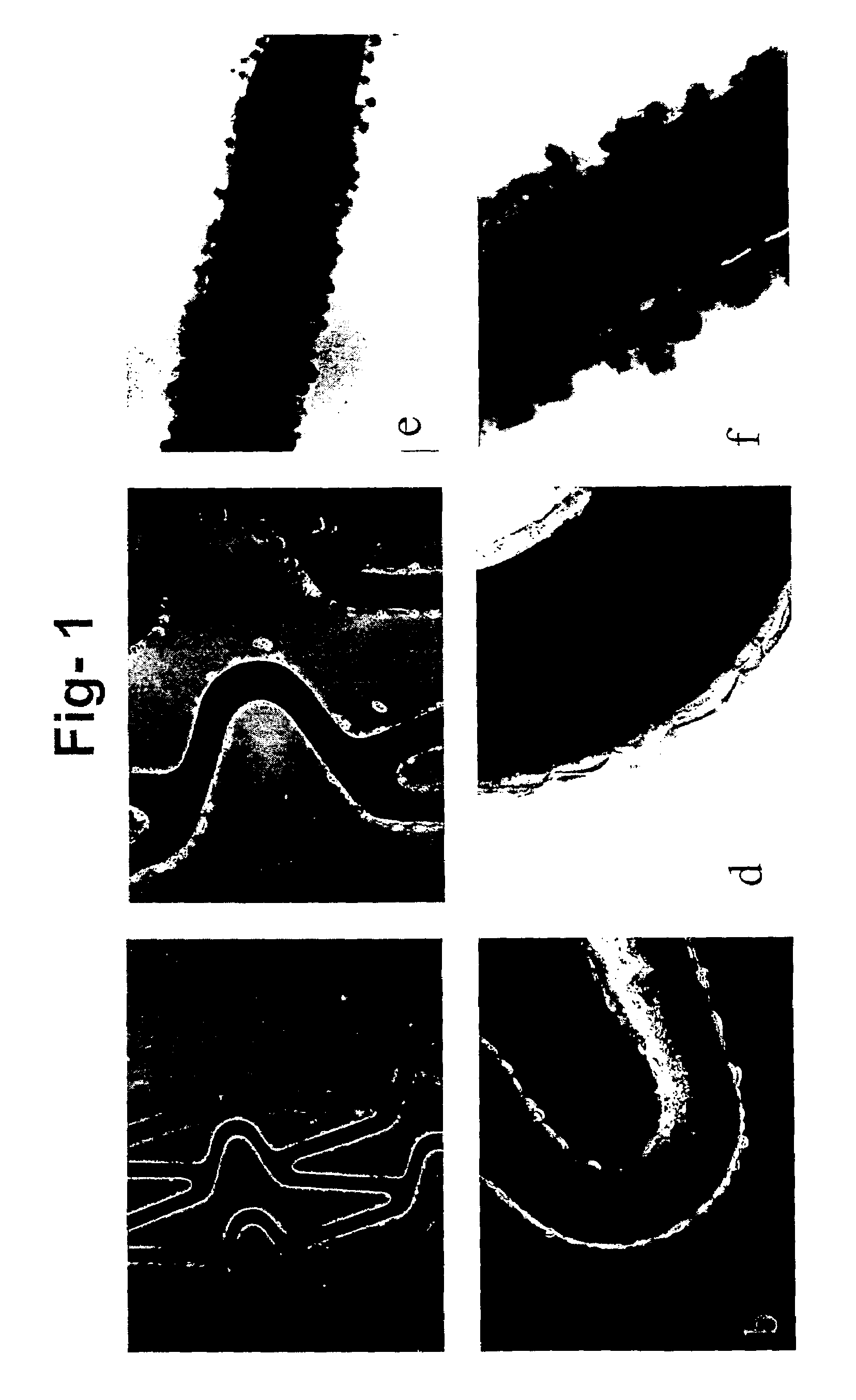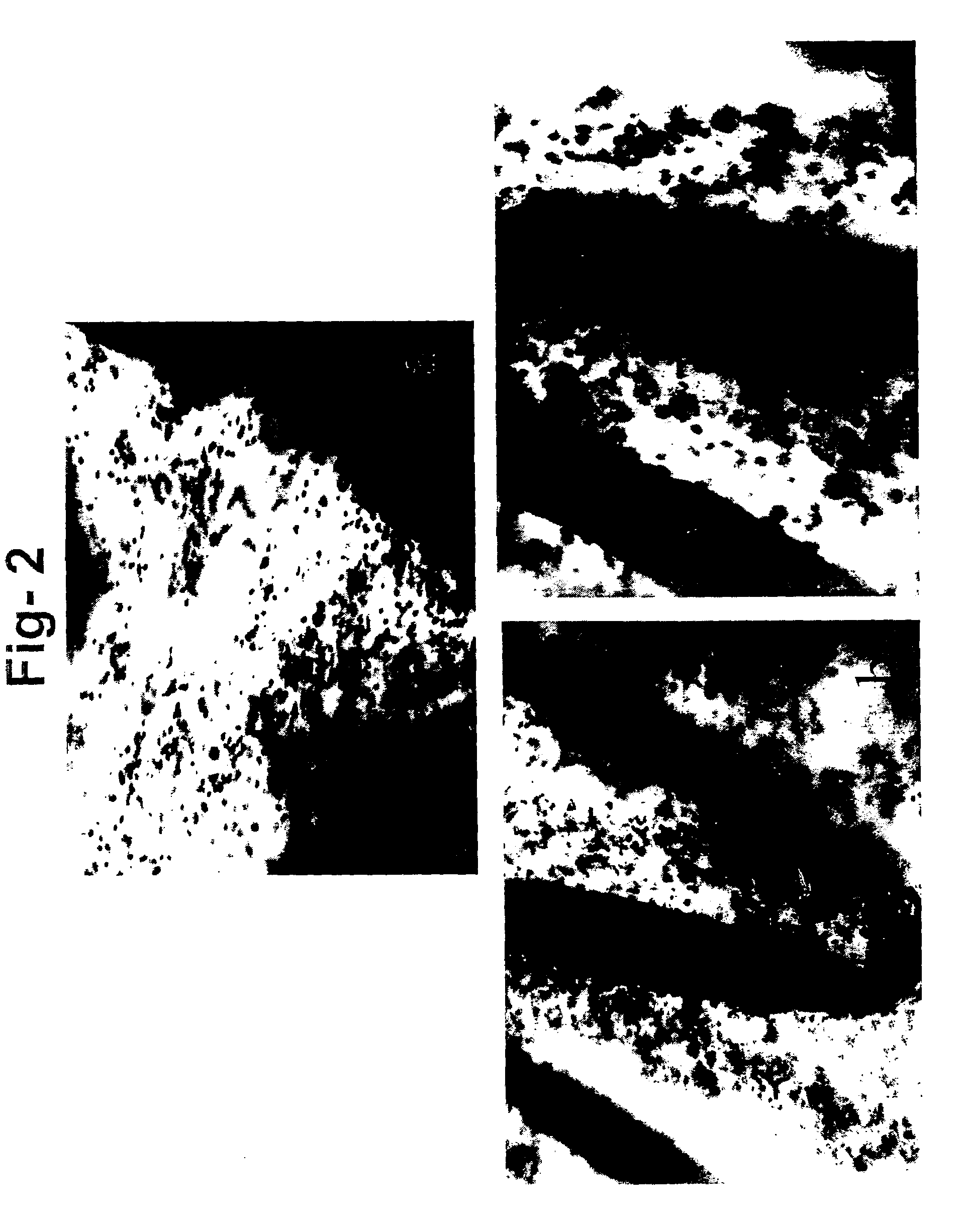Composition derived from biological materials and method of use and preparation
a technology of biological materials and compositions, applied in the field of compositions derived from biological materials, can solve the problems of common disadvantages or drawbacks, polymers are often not biodegradable, and materials are not fully compatible with the body, and achieve the effect of reducing the risk of infection
- Summary
- Abstract
- Description
- Claims
- Application Information
AI Technical Summary
Benefits of technology
Problems solved by technology
Method used
Image
Examples
experiment 1
tents to Support Cell Growth or Glue Live Cells
[0048]The ability of a stent coated with the composition of the invention to support cell growth was tested using various types of cells. The cell types tested were NIH3T3 mouse fibroblast cells, human umbilical vein endothelial cells (HUV-EC-C), human aortic smooth muscle cells (HA-HSMC) and human mesenchymal stem cells (hMSC) and retroviral packaging cells.
[0049]Under sterile conditions a mixture of complement inactivated serum containing 5% gelatin and 250 U / ml heparin was prepared. The gelatin was dissolved by vortexing, followed by heating at 45° C. for 15 minutes.
[0050]In one method the composition prepared was coated on to the stent in three layers with drying for 1 hr at 4° C. after the first two coats, and 30 minutes at room temperature after the third coat. The coated stents were then cultured with NIH3T3, HUV-EC-C, HA-HSMC and hMSC cells at a concentration of 106Cells / ml in respective media for 4 hours. The stents were then t...
experiment 2
s as A Targeted Delivery System for Cells, Genes and Drug Delivery
[0052]The use of intra-vascular stents in the treatment of arteriosclerosis is frequently complicated by intimal hyperplasia, a pathological process that leads to re-occlusion of the stented blood vessel. Gene therapy is a potential therapeutic approach for the treatment of intimal hyperplasia. However, a major limiting factor of this approach remains in gene delivery to the target site in sufficient concentration. Release of naked DNA from polymer coated controlled release stent resulted in a very low level of transduction and only transient expression of the therapeutic gene. Viral vectors, and particularly retroviral vectors, are very efficient transducing agents. However, we found that the use of retroviral vector alone results in a very low level of transduction, probably due to the very low rate of replication of the smooth muscle cells in the vessels. We have also found that co-culture with viral packaging cell...
experiment 3
as a Skin Dressing and Scaffold to Grow Skin.
[0069]Gelatin at a concentration ranging from 1 to 40% preferably 5% to 10% is dissolved in autologus or hetrologus serum (50 to 100% concentration) by vortexing followed by heating at 45° C. for 15 min there after cooling to 37° C. Keeping the mixture in liquid state additives such as heparin, drugs or factors can be added. The mixture is then polymerised using a cross-linking agent. The concentration of cross-linking agent used is low and is generally not toxic to cells when it is added to cells maintained in a culture media. Following the addition of cross-linking agent the mixture is vortexed rapidly and poured into a petridish and spread evenly. The material polymerised in a few seconds to minutes depending on the concentration. Excess cross-linking agent can be removed by washing with PBS 3×1 hr each. In conditions involving use of high concentration of polymerising agent overnight washing can be done. The material formed is stable ...
PUM
| Property | Measurement | Unit |
|---|---|---|
| concentration | aaaaa | aaaaa |
| temperature | aaaaa | aaaaa |
| temperature | aaaaa | aaaaa |
Abstract
Description
Claims
Application Information
 Login to View More
Login to View More - R&D
- Intellectual Property
- Life Sciences
- Materials
- Tech Scout
- Unparalleled Data Quality
- Higher Quality Content
- 60% Fewer Hallucinations
Browse by: Latest US Patents, China's latest patents, Technical Efficacy Thesaurus, Application Domain, Technology Topic, Popular Technical Reports.
© 2025 PatSnap. All rights reserved.Legal|Privacy policy|Modern Slavery Act Transparency Statement|Sitemap|About US| Contact US: help@patsnap.com



